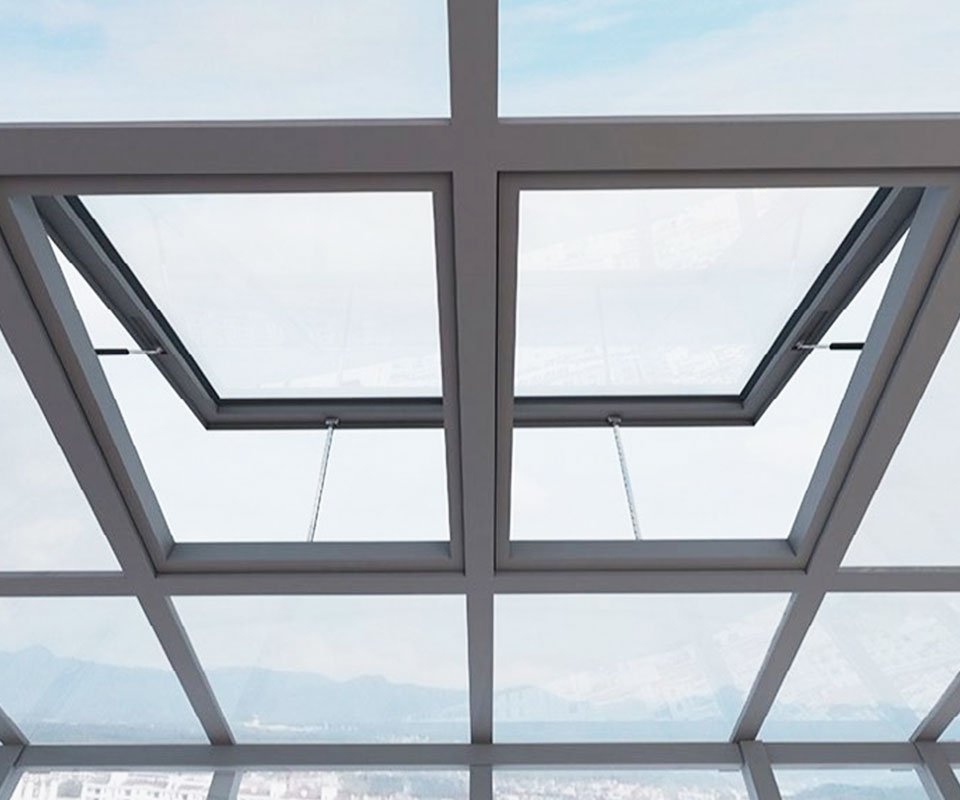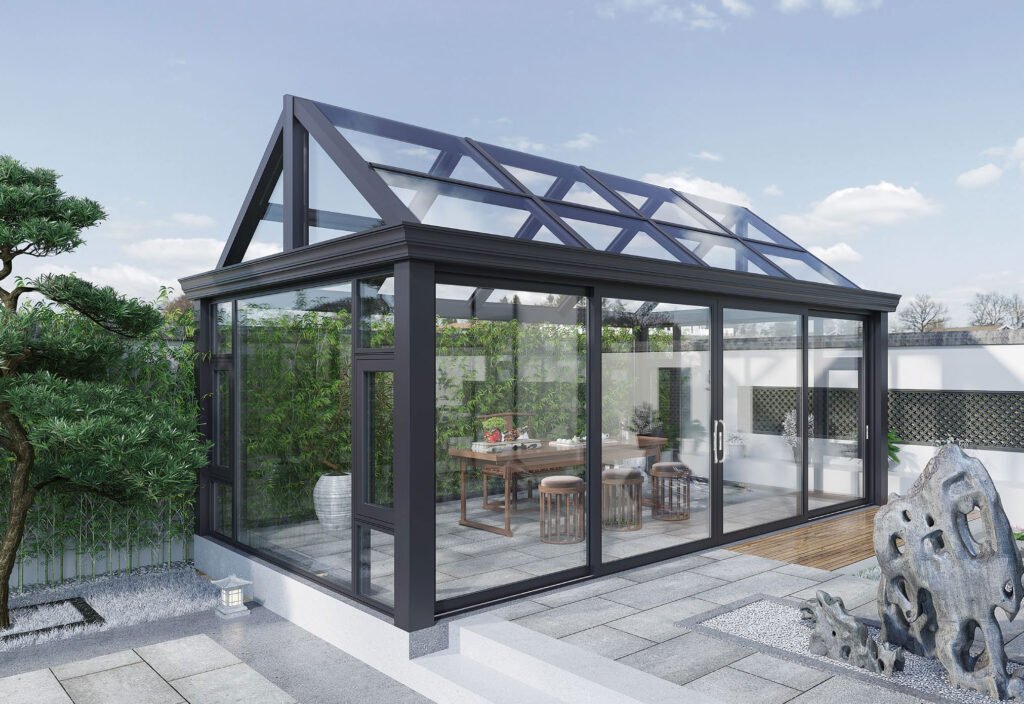The type of glass you choose for your sunroom plays a crucial role in its comfort, energy efficiency, and durability. The right glass can help regulate temperature, reduce glare, and enhance aesthetics. Whether you are designing a new sunroom or upgrading an existing one, selecting the appropriate glass ensures year-round usability and optimal performance.

1. Types of Glass for Sunrooms
There are various types of glass to consider for your sunroom, each with unique properties that impact insulation, safety, and light transmission.
a. Single-Pane Glass
- The most basic and affordable option.
- Provides minimal insulation, making it less suitable for extreme climates.
b. Double-Pane Glass
- Consists of two layers of glass with an insulating air or gas layer in between.
- Reduces heat transfer, improving energy efficiency and comfort.
- Helps to lower energy costs by maintaining indoor temperatures.
c. Triple-Pane Glass
- Offers superior insulation with three layers of glass.
- Ideal for extreme weather conditions, keeping the space warm in winter and cool in summer.
- Enhances soundproofing, reducing outdoor noise.
d. Low-E (Low Emissivity) Glass
- Has a microscopically thin coating that reflects heat while allowing natural light.
- Minimizes UV rays, protecting furniture and flooring from fading.
- Improves thermal performance, keeping the sunroom comfortable in all seasons.
e. Tempered Glass
- Stronger and more durable than regular glass.
- Breaks into small, less hazardous pieces for enhanced safety.
- Recommended for sunroom roofs and areas where impact resistance is needed.
f. Laminated Glass
- Composed of multiple layers with a protective interlayer for added strength.
- Provides excellent sound insulation and UV protection.
- Ideal for homes in high-wind or hurricane-prone areas.
2. Energy Efficiency Considerations
Selecting energy-efficient glass can help regulate indoor temperatures and reduce heating or cooling costs. Consider the following factors:
U-Value
- Measures the rate of heat transfer through the glass.
- Lower U-values indicate better insulation and higher energy efficiency.
Solar Heat Gain Coefficient (SHGC)
- Determines how much solar heat the glass allows inside.
- A lower SHGC reduces heat buildup, making it ideal for sunny regions.
Argon or Krypton Gas-Filled Glass
- Inert gases between panes enhance insulation by reducing heat transfer.
- Improves energy efficiency without compromising visibility.
3. Glare and UV Protection
Glare reduction and UV protection are essential for a comfortable sunroom experience.
- Tinted Glass: Reduces glare and excessive brightness while adding privacy.
- Reflective Glass: Minimizes solar heat gain and enhances energy savings.
- UV-Blocking Glass: Protects interiors from sun damage while allowing natural light.
4. Safety and Durability
For safety, consider tempered or laminated glass to withstand impact and harsh weather conditions. If your sunroom includes a glass roof, ensure it is designed to handle heavy loads such as snow and debris.
5. Aesthetic and Customization Options
Glass options come in various tints, patterns, and coatings to match your sunroom’s design. Frosted, etched, or textured glass provides privacy while maintaining a stylish appearance.

Conclusion
Choosing the right glass for your sunroom is a balance of energy efficiency, safety, and aesthetics. By selecting the best glass type, you can create a comfortable, durable, and visually appealing space that suits your climate and lifestyle. Delanshini Doors and Windows offers high-quality glass solutions tailored to your needs. Contact us at wang@gddlsn.com to explore the best options for your sunroom project.
